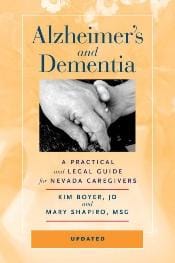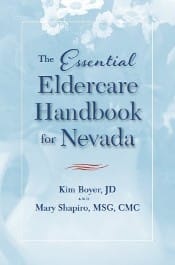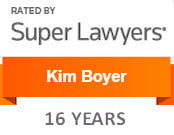Veterans Planning Attorney
By Kim Boyer
Certified Elder Law Attorney and
VA Accredited Attorney
Las Vegas, Nevada 89135
702-255-2000
[email protected]

A wartime veteran or the surviving spouse of a wartime veteran may be entitled to a benefit through the Veterans Administration (VA) to help pay for the cost of long-term care. The first US Congress passed a law in 1789 to provide pensions to disabled veterans and their dependents. This article discusses the VA pension benefits.
Improved Pension / Aid and Attendance
Veterans or the surviving spouses of veterans may be entitled to an Improved Pension to offset the cost of necessary health care. This is often called “Aid and Attendance.” A person must meet basic certain criteria to be eligible for Improved Pension:
(a) The veteran must have served at least ninety (90) days of consecutive active duty service, one (1) day of which must have been during a war-time period. This is increased to two (2) years for the Gulf War. In general, wartime is:
| World War II | December 7, 1941 to December 31, 1946 (extended to July 26, 1947, when continuous with active duty on or before December 31, 1946) |
| Korean War | June 27, 1950 to January 31, 1955 |
| Vietnam War | August 5, 1964 – May 7, 1975(or February 28, 1961 to May 7, 1975 for those who Served in the Republic of Vietnam during that period) |
| Gulf War | August 2, 1990 through date to be set by law by Presidential Proclamation |
(b) the veteran must have received a discharge other than dishonorable;
(c) the claimant must have limited income and assets available;
(d) the claimant must have a permanent and total disability at the time of application or is over the age of 65;
(e) the disability was caused without willful misconduct of the claimant;
(f) the veteran or widow signs an application and provides the application to the Veterans Administration; and
(g) the claimant must meet income and asset criteria, discussed below.
Income Limits
The applicant’s countable income must be less than the applicable maximum annual pension rate (MAPR). If married, a veteran’s and spouse’s joint income must be less than the MAPR. Although most applicants have income that exceeds the MAPR, unreimbursed medical expenses paid by the claimant may be used to reduce the claimant’s countable income.
The new rules specifically define medical expenses for VA purposes as those that are “medically necessary; that improve a disabled individual’s functioning; or that prevent, slow, or ease an individual’s functional decline.”
Asset Requirements
Effective October 18, 2018, there is set limit equivalent to the maximum community resource allowance under Medicaid, and the limit will change yearly based on the adjustment to cost of living in Social Security. For 2023, this amount is now $148,620.00.
Net worth is defined as the sum of annual income and assets. The applicant’s annual income (after deducting eligible medical expenses) is added to the applicant’s assets. Previously, there had been no clearly defined asset limit, so this is a major change.
Assets are defined as fair market value of all property owned, unless excluded, and less any encumbrances specific to the encumbered property. There are exceptions to what is and is not counted towards assets and income and what is counted towards the assets limit. The home in which one lives is not countable, but a two-acre limit is imposed. Also excluded are the applicant’s vehicle, household goods, and life insurance policies.
A veteran’s assets are defined to include the assets of the veteran and the spouse. A surviving spouse will only have his or her assets considered. If the applicant has a net worth over the threshold and does not qualify for benefits, he or she can spend-down assets by purchasing goods or services for fair market value.
Look-Back Rules
There is a look-back period of 36 months when applying for improved pension. Any asset that was transferred for less than fair market value during the 36-month period immediately preceding the pension application will result in a penalty period, not to exceed five (5) years. The divisor used to calculate the penalty is the Maximum Annual Pension Rate in effect as of the pension application date, at the rate of the aid and attendance level for a Veteran with one dependent.
Only the amount transferred in excess of the net worth limit will be subject to a penalty. Thus, there is no transfer penalty imposed if the applicant did not have assets greater than the net worth limit already, regardless of the transfer. There is no penalty if the transfer was to a trust established for a child, who VA has determined is incapable of self-support.
If an annuity was purchased during the look-back period, then a penalty will be imposed using the entire amount placed in the annuity. This rule was established based on perceived abuses of annuities in attaining eligibility for VA benefits.
Disclaimer: This article is designed to provide accurate and authoritative information in regard to the subject matter covered. It is published with the understanding that the publisher is not engaged in rendering legal, accounting or other professional service. If legal advice or other expert assistance is required, the services of a competent professional person should be sought.





